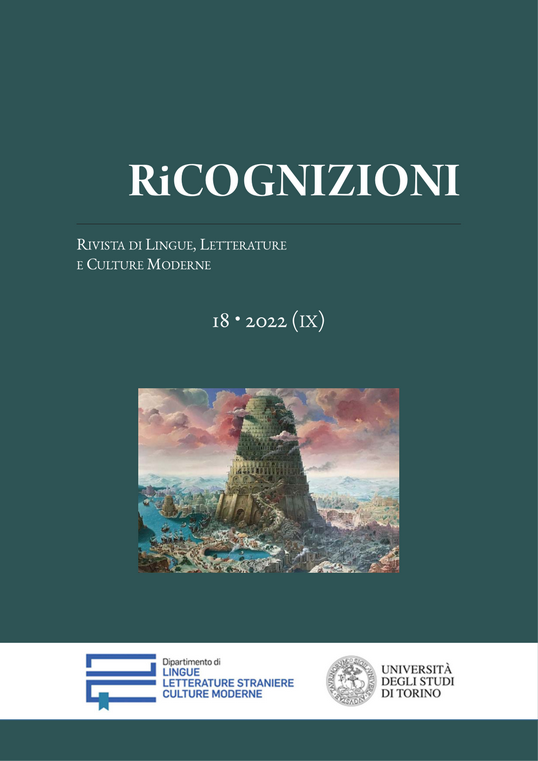Linguistica e tradizione classica come fonti per la glottopoiesi di Tolkien
DOI:
https://doi.org/10.13135/2384-8987/7132Parole chiave:
Quenya, Latin, orthography, phonetics, grammarAbstract
Tolkien was not only a successful author of one of the most complex fantasy lore available in Western literature, but he was also a gifted philologist whose interests ranged from the most disparaged languages, such as Germanic languages, Finnish, Celtic languages and also Latin and Greek. For the creation of his glottopoietic masterpieces – Quenya and Sindarin – he followed an a posteriori process, moving from the templates represented by natural languages, such as Finnish, Germanic languages, Welsh and also Classical languages. Focussing on Quenya, in particular, it is noticeable how this invented language possesses a few relevant features that makes it similar to Latin not only according to the narrowest linguistic perspective but also according to a broader perspective, including the sociolinguistic viewpoint. Some of these features have been summarized and presented in this paper, showing how Tolkien not only reproduced – according to his phonoaesthetic taste – linguistic feature that were closer to Latin than to any other language, but he also reproduced and mimicked the relationships that Latin had with other languages during different periods of its existence.
##submission.downloads##
Pubblicato
Come citare
Fascicolo
Sezione
Licenza
Gli autori che pubblicano su questa rivista accettano le seguenti condizioni:- Gli autori mantengono i diritti sulla loro opera e cedono alla rivista il diritto di prima pubblicazione dell'opera, contemporaneamente licenziata sotto una Licenza Creative Commons - Attribuzione che permette ad altri di condividere l'opera indicando la paternità intellettuale e la prima pubblicazione su questa rivista.
- Gli autori possono aderire ad altri accordi di licenza non esclusiva per la distribuzione della versione dell'opera pubblicata (es. depositarla in un archivio istituzionale o pubblicarla in una monografia), a patto di indicare che la prima pubblicazione è avvenuta su questa rivista.
- Gli autori possono diffondere la loro opera online (es. in repository istituzionali o nel loro sito web) prima e durante il processo di submission, poiché può portare a scambi produttivi e aumentare le citazioni dell'opera pubblicata (Vedi The Effect of Open Access).








